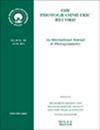使用数字地图数据的卫星图像配准的地面控制测定
IF 3.6
3区 地球科学
Q2 GEOGRAPHY, PHYSICAL
引用次数: 2
摘要
报告了从SPOT图像中产生地形高程数据的工作。该过程的一个重要步骤是确定图像的外部定向参数。虽然SPOT标头中有一个初步的估计,但需要根据平面图和高度数据进行细化。这些通常来自摄影测量(或全球定位卫星系统等来源),但准确的人工确定是耗时的。本文报告了另一种方法,通过调查现有地图数据(位于地球表面和已知投影)的使用,在地图和图像中找到相应的“地面控制点”。现有的地图可能是数字形式或纸质形式,这取决于所研究地区的地图发展状况。最后修订日期和所采用的制图概括也将影响最终结果的保真度。本文描述了从现有地图数据确定地面控制点高度的实用半自动技术,包括通过数字化等高线数据确定多个剖面、基于Delaunay三角测量的商业地形建模软件包以及在突出特征上使用三角测量点。并将所得到的结果与国家地理研究所的数据集和摄影测量结果进行了比较。讨论了在地图数据库中实现高度确定和地面控制特征位置完全自动化的方法。地图和图像配准描述和说明使用激光扫描的漫游者软件。讨论了交互式和自动化的注册方法。本文章由计算机程序翻译,如有差异,请以英文原文为准。
GROUND CONTROL DETERMINATION FOR REGISTRATION OF SATELLITE IMAGERY USING DIGITAL MAP DATA
Work is reported on the production of terrain elevation data from SPOT imagery. An important step in this process is determination of exterior orientation parameters for the images. Although an initial estimate is available in the SPOT header, refinements are required based on plan and height data. These are generally derived from photogrammetric measurements (or sources such as global positioning satellite systems), but accurate manual determination is time consuming.
This paper reports an alternative approach by investigating the use of existing map data (located on the earth's surface and in a known projection) to find corresponding “ground control points” in both map and image. Available maps may be in digital or paper form depending on the state of development of mapping in the part of the world being studied. The last revision date and the cartographic generalisation employed will also effect the fidelity of the final result. Practical semi-automatic techniques for determining the height of ground control points from existing map data are described, including multiple profiles through digitised contour data, a commercial terrain modelling package based on Delaunay triangulation and the use of triangulation points on prominent features.
Comparisons between the methods are made and results obtained are compared with Institut Geographique National datasets and photogrammetric measurements. Methods for fully automating not only the height determination but also the location of ground control features within a map database are discussed. Map and image registration is described and illustrated using Laser-Scan's Rover software. Interactive and automated methods of registration are discussed.
求助全文
通过发布文献求助,成功后即可免费获取论文全文。
去求助
来源期刊

Photogrammetric Record
地学-成像科学与照相技术
CiteScore
3.60
自引率
25.00%
发文量
71
审稿时长
>12 weeks
期刊介绍:
The Photogrammetric Record is an international journal containing original, independently and rapidly refereed articles that reflect modern advancements in photogrammetry, 3D imaging, computer vision, and other related non-contact fields. All aspects of the measurement workflow are relevant, from sensor characterisation and modelling, data acquisition, processing algorithms and product generation, to novel applications. The journal provides a record of new research which will contribute both to the advancement of photogrammetric knowledge and to the application of techniques in novel ways. It also seeks to stimulate debate though correspondence, and carries reviews of recent literature from the wider geomatics discipline.
Relevant topics include, but are not restricted to:
- Photogrammetric sensor calibration and characterisation
- Laser scanning (lidar)
- Image and 3D sensor technology (e.g. range cameras, natural user interface systems)
- Photogrammetric aspects of image processing (e.g. radiometric methods, feature extraction, image matching and scene classification)
- Mobile mapping and unmanned vehicular systems (UVS; UAVs)
- Registration and orientation
- Data fusion and integration of 3D and 2D datasets
- Point cloud processing
- 3D modelling and reconstruction
- Algorithms and novel software
- Visualisation and virtual reality
- Terrain/object modelling and photogrammetric product generation
- Geometric sensor models
- Databases and structures for imaging and 3D modelling
- Standards and best practice for data acquisition and storage
- Change detection and monitoring, and sequence analysis
 求助内容:
求助内容: 应助结果提醒方式:
应助结果提醒方式:


